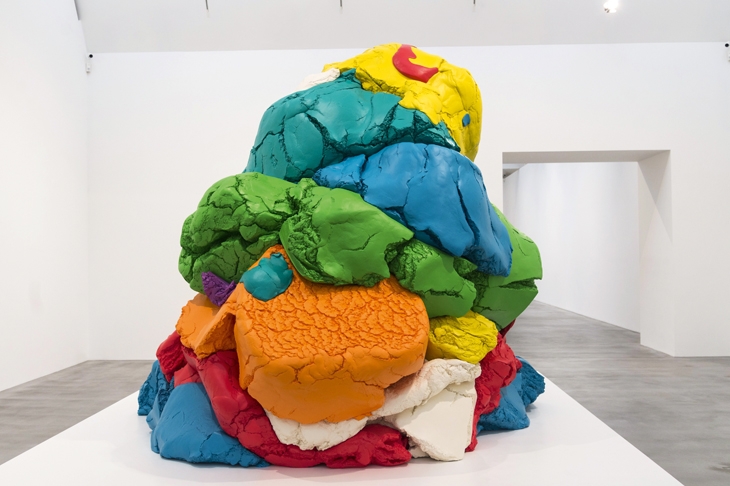I always suspected I disliked Jeff Koons, until I saw one of his monumental pieces at Frieze London a few years ago. Then it was confirmed. Cynicism seemed to ooze out of every millimetre of his vast, shiny sculpture. It was vividly apparent that this artwork wasn’t about beauty or transcendence or emotion. It was about money.
Don Thompson’s The Orange Balloon Dog (the title is taken from the name of a Koons piece) is ostensibly about the contemporary art market. He details recent auctions, using the autumn 2014 sales — where buyers spent $1.7 billion in two days at Sotheby’s and Christie’s — as his starting point. But, as the subtitle would suggest, this is really a book about money: who has it, where they spend it, how they hide it. The same names crop up again and again: the artists Andy Warhol, Jeff Koons and Damien Hirst; the dealers Larry Gagosian, who ‘accounts for about 2 per cent of the world contemporary art market’, David Zwirner and Iwan Wirth; and the collectors Peter Brant, Eli Broad and Steven Cohen. (Note the male dominance; this is largely a testosterone-run game.)
The sums involved are extraordinary: $81.9 million for a Warhol ‘Elvis’ here, $135 million for a Klimt there. Sheikha al-Mayassa al-Thani of Qatar, chair of the Qatar Museums Authority and sister of the Emir, is said to have an acquisition budget of $1 billion per annum for her glittering new 995,000-square foot gallery in Doha Bay. The Centre Pompidou’s budget, by contrast, is $4 million per year.
When there’s this much cash floating around, corruption is bound to follow hot on its heels. But the art market is a shady world, unaccountable in the same way that stock or funds are.







Comments
Join the debate for just £1 a month
Be part of the conversation with other Spectator readers by getting your first three months for £3.
UNLOCK ACCESS Just £1 a monthAlready a subscriber? Log in